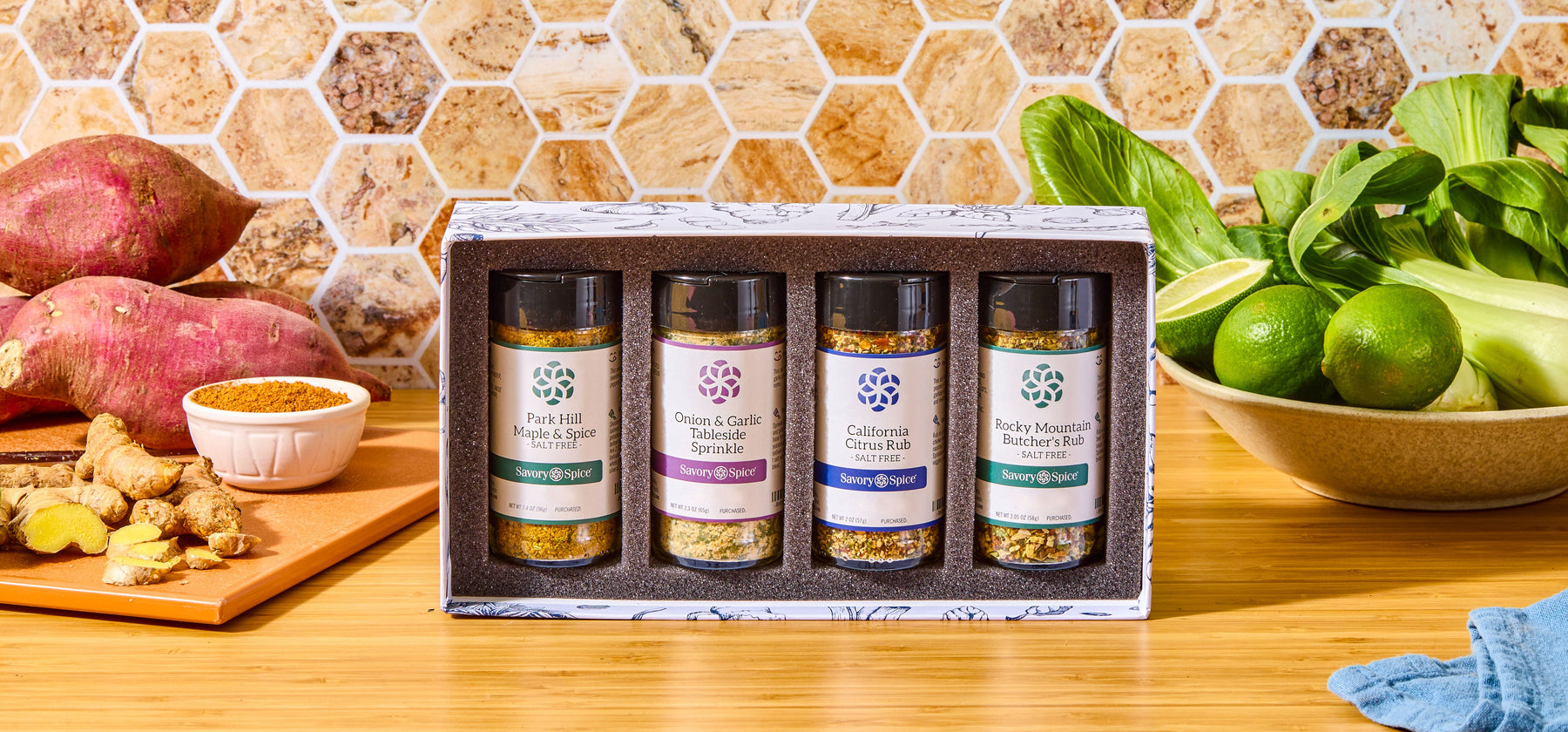No Salt Needed: 5 Tips for Adding Salt-Free Flavor

Who says going salt-free can’t be delicious? Whether you are avoiding it for health or preference, putting down the salt shaker doesn’t mean you have to sacrifice great food. Enhancing taste can be as simple as heightening our basic flavors like sour, sweet, and savory.
Our Test Kitchen Assistant Ashlee Redger is a culinary student at Johnson & Wales who is enrolled in a program that focuses on nutrition. Check out her expert tips for eating well on a low-sodium diet.
Who says going salt-free can’t be delicious? Whether you are avoiding it for health or preference, putting down the salt shaker doesn’t mean you have to sacrifice great food. Enhancing taste can be as simple as heightening our basic flavors like sour, sweet, and savory. Here are some expert tips for eating well on a low-sodium diet.
1. Use Acidity to Your Advantage
Citrus can be a wonderful addition to salt-free dishes by creating strong, bright flavors in any dish, from appetizer to dessert. California Citrus Rub can be used on chicken and pork or can be whisked into a vinaigrette to dress salad greens or grains.
Tomatoes also contain a fair amount of acid and can heighten flavors. Chimichurri Dry Marinade is delicious as a beef rub or marinade and contains the classic garlic-and-herb flavor of a classic chimichurri mixed with Tomato Powder that works to add a natural sweetness to the blend.
2. Umami Equals Tastiness
Umami is a flavor that gets its name from the Japanese word for “savory.” There are many natural ingredients that can be added to dishes to bring out this pleasant impression, including tomatoes, beef, and the classical French mirepoix (diced carrots, onions, and celery). Mushrooms have particularly prominent umami flavors. Herbs Duxelles can be used to add richness to broths, soups, stews, sauces, or gravies. Don't stop there, sprinkle it on veggies or pasta.
3. Garlic, the Great
Perhaps the ultimate crowd-pleaser to add character to a dish is garlic. For the added nuttiness and sweetness, Roasted Granulated Garlic can deepen flavors without any added effort. For even more ease, use Onion & Garlic Tableside Sprinkle (in place of salt) to season meats and soups or add the final touch to sauces.
4. Like a Little Heat?
Get your endorphins going by adding some spiciness! Chiles or seasoning that include a bit of spice can excite your palate and change up your go-to flavors or dishes. Add layers of flavor by using the salt-free variety of our Cajun Blackening Seasoning to sprinkle on fries, sautéed vegetables, or to blacken steak, chicken, or fish.
5. Go Back to Basics
Let the flavors speak for themselves by using dried herbs to create complexity in your dishes. Dill Weed can bring delicate brightness when used in dips, to finish soups, or sprinkled over savory baked goods like crackers. On the other end of the spectrum, Cracked Rosemary has a deep, piney flavor that works well with roasted beef, lamb, or chicken. Poultry Seasoning is a classic. For more intricate flavors, try the quintessential French blend Herbes de Provence or Italian all-purpose Cantanzaro Herbs.
Try this recipe that uses dried herbs to enhance flavor:
- Slow Cooker “Roast” Chicken is very easy and can be easily customized with your favorite salt-free seasoning blend.
You can find even more salt-free seasonings here. Do you have a go-to salt-free recipe? Tell us about it below.


Comments
Leave a comment